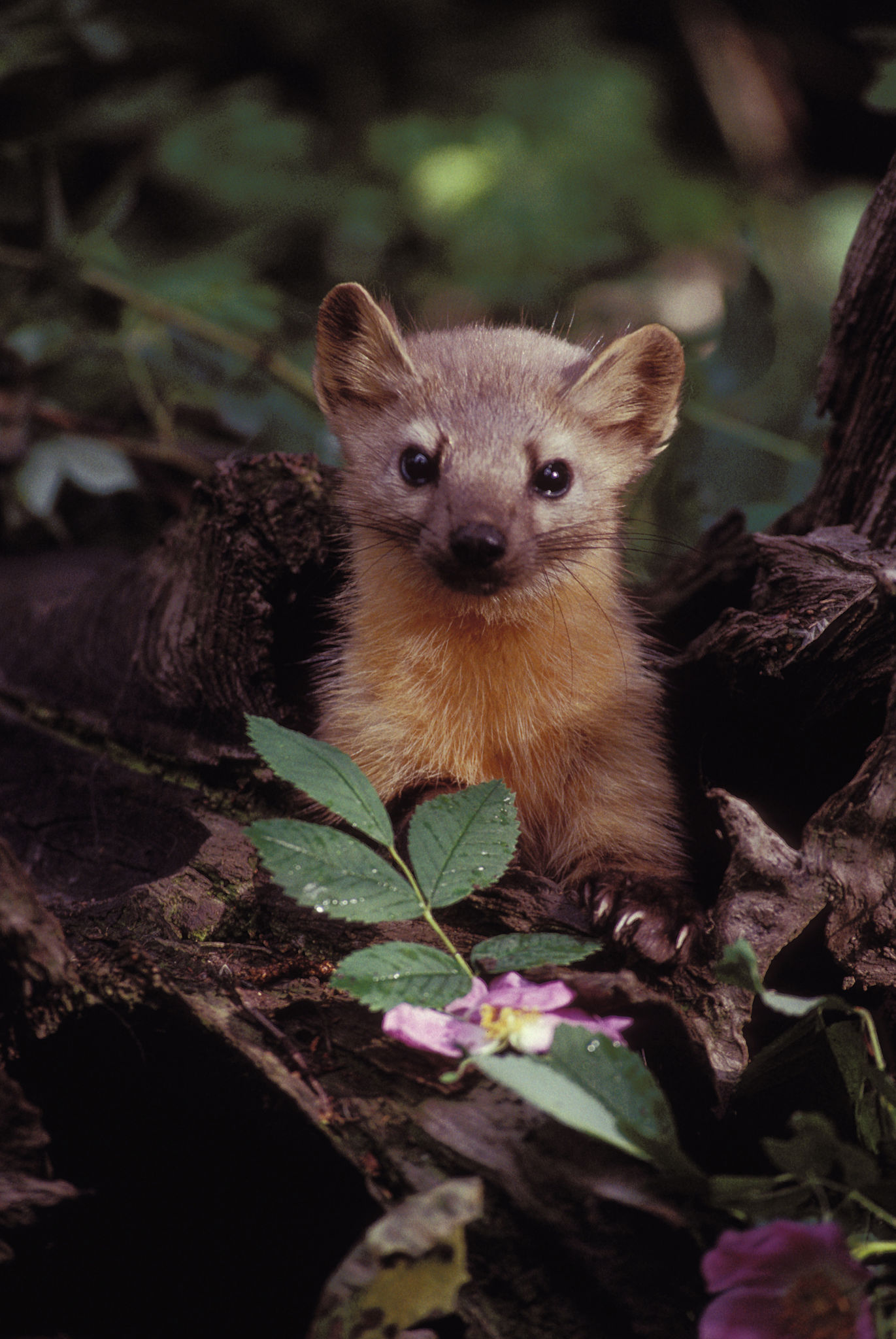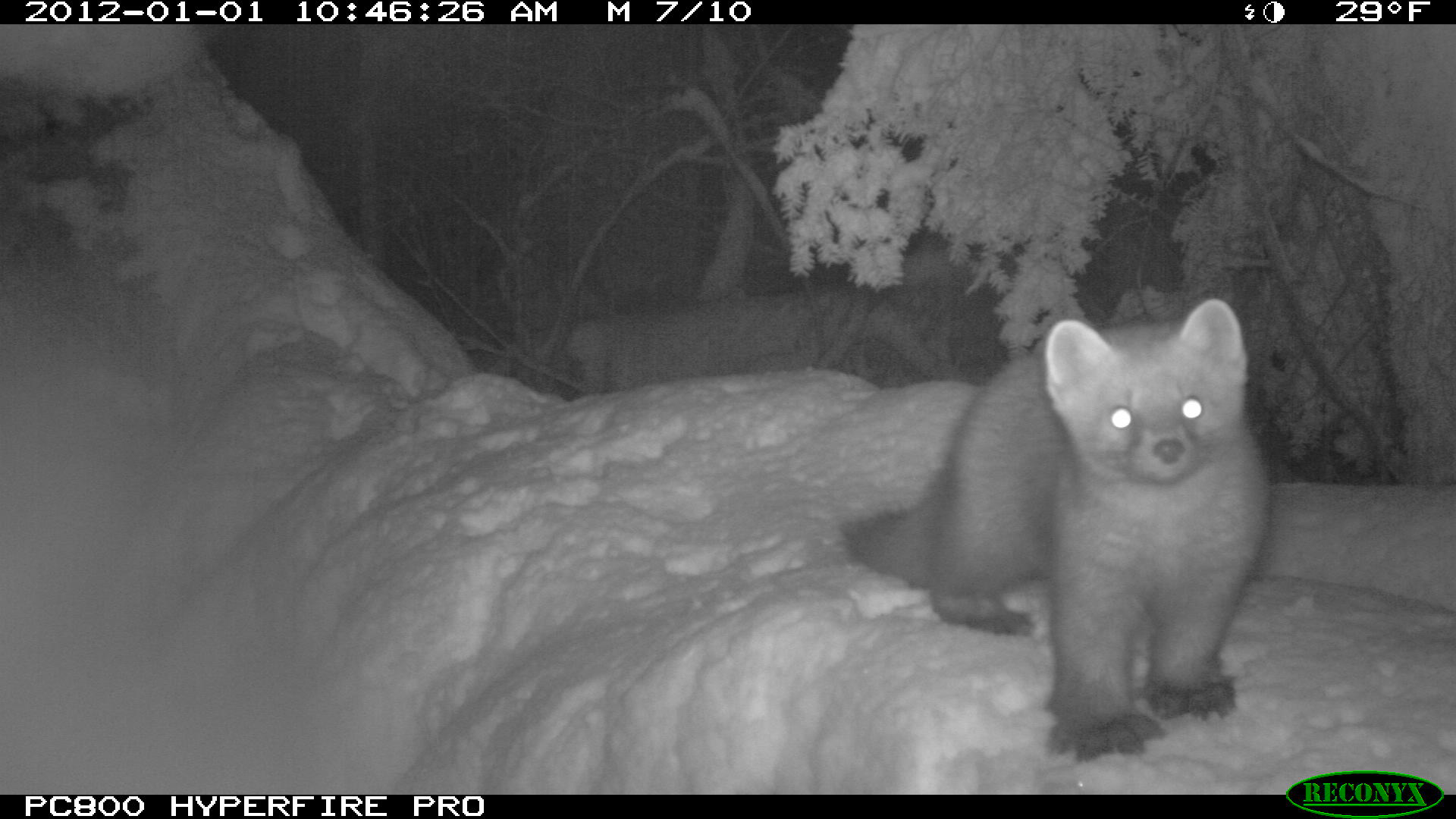From pizza rat to highway sloths, there’s something about seeing a cute little critter in the wild that just can’t be beat. Unfortunately, these chance meetings between humans and animals don’t always work out great for the animal – which may be why some of the more canny ones prefer to avoid us at all costs.
And the undisputed king of hiding from humans? The marten.

This fella.
Image Credit: United States Fish and Wildlife Service, Public Domain
Specifically, the American marten – sometimes referred to as the American pine marten because of its resemblance to its Eurasian cousin of the same name. Living across the whole of the north of the continent, especially in Canada and Alaska, this little weasel likes to hole up in snowy, forested areas such as the Adirondacks in New York. If necessary, their home ranges can be as large as 40 square kilometers (15 square miles) – and yet, chances are, you’ll never see one in person.
So how are they so elusive?
Nature’s most adorable little killer
Martens are not large animals: they grow to lengths of around 35–43 cm (14–17 inches), with a big bushy 18–23-cm (7–9-inch) tail to boot, and weigh between 1 and 2 kilograms (2.2 to 4.4 pounds).
Despite that – and their undeniably adorable countenance – they’re quite the bloodthirsty little buggers, using their sharp, semi-retractable claws to take down everything from mice and voles to much larger prey like hares and squirrels.
“What they will do is chase squirrels through the trees, lunge, actually [they] can grab them out of mid-air, and then they [give a] bite to the back of the neck,” explains wildlife YouTuber Coyote Peterson in a 2014 video featuring the diminutive mustelid.
“These long little canine teeth there are perfect for inflicting that death wound,” he points out, “and then of course, they have their meal.”
While cute, they’re also perfectly suited to their habitat, making them a highly successful hunter. “Martens have specific adaptations that give them an advantage in snow relative to other carnivores,” Cody Aylward, then a PhD candidate in the department of wildlife, fish and conservation biology at the University of California Davis, told HowStuffWorks in 2022.
“They have wide feet compared to their body weight, which act like snowshoes and allow them to travel more efficiently in deep snow,” he explained, which gives them an important edge over other local predators like foxes and coyotes. They’re even adept at hunting and moving underneath the snow itself – truly earning their nigh invisible reputation.
The elusive marten
When we say martens are good at hiding, we don’t just mean from your average everyday wildlife spotter. These little guys are infamous not just for evading random hikers, but for outwitting the people whose only job is to find them.
In fact, the humans even had a head start. “Martens were reintroduced to the Green Mountain National Forest in southern Vermont in 1989,” Aylward told HowStuffWorks. “A few years after the reintroduction, a follow-up study concluded that the reintroduction was unsuccessful. There were no reports of martens in the area for the next twenty years.”
But all was not as it seemed. “In 2010, a few martens were captured in fisher traps in southern Vermont and our genetic work showed that these animals were, in fact, descendants of the 1989 reintroduction,” he explained. “So, for over twenty years martens lived in the Green Mountain National Forest without any confirmed records of their existence.”
How do they stay so reclusive? Part of their secret is in their preferred habitat, Aylward explained: “They prefer to be deep in the forest, far from roads or fields, in areas that receive significant snowfall,” he said. “Their habitat preferences align pretty well with things that make terrain difficult for humans to access.”
They’re also crepuscular – that is to say, they’re most active during dawn and dusk, when fewer people are out and able to encounter them. They move silently, in the tops of trees or under snowpack, so your attention is unlikely to be drawn to them even if you are close to one.

Caught! In Sitka, Alaska
And, of course, there’s another important reason you likely won’t see one in the wild: they don’t want you to. While they’re known to be bold and courageous when necessary – they will fight you, in other words – they prefer to jump under the snow and tunnel away, or use those claws to run up the nearest tree when they feel threatened.
“You could never approach and go after one of these animals in the wild,” Peterson says. “This is one of the most agile members of the weasel family.”
Are American martens endangered?
While evidence for the critters tends to be scant, the American marten is in many ways a success story in the usually gloomy modern era of ecology. Not only is the marten not endangered, but populations of the mustelid are actually increasing in some places: there are now thriving populations in Michigan, for example, after local efforts to reintroduce them to the state in recent decades; just this year martens were spotted in Wisconsin after a century of extinction in the area.
And that’s not all. Increasingly, conservationists are helping the martens by creating what’s known as “habitat corridors” – which are pretty much what they sound like, actually. “Habitat corridors are areas of forested habitat that occur between these small and isolated populations,” Aylward told HowStuffWorks. “Even if the corridors themselves cannot support a marten population permanently, they can increase the chances of successful migration between two isolated populations, which increases gene flow and reduces the chances of inbreeding depression.”
But just because martens aren’t endangered, that doesn’t mean they’re not in danger. Like so many species – especially those who rely on snow for hunting and hiding – their survival is threatened by climate change. Human interference in the animals’ habitat is a constant worry: Alaska, famously, is at more-or-less perpetual threat of having its wildlife refuge areas sold to fossil fuel companies, and Canada, despite its reputation as America’s more sensible hat, is also pretty gung-ho about the whole climate apocalypse thing.
“Even changes as subtle as constructing a dirt road through the forest can negatively affect martens,” Aylward said. “[It makes] these remote areas more accessible to larger carnivores such as foxes and coyotes.”
Hopefully, though, thanks to conservation and reintroduction efforts, as well as phasing out of fossil fuels (hey, we can dream) these cute little fuzzballs will be out there killing squirrels for a long, long time.
And we – well, we can continue to never see them at it.
Source Link: This Is An American Marten. You'll Probably Never See One In The Wild